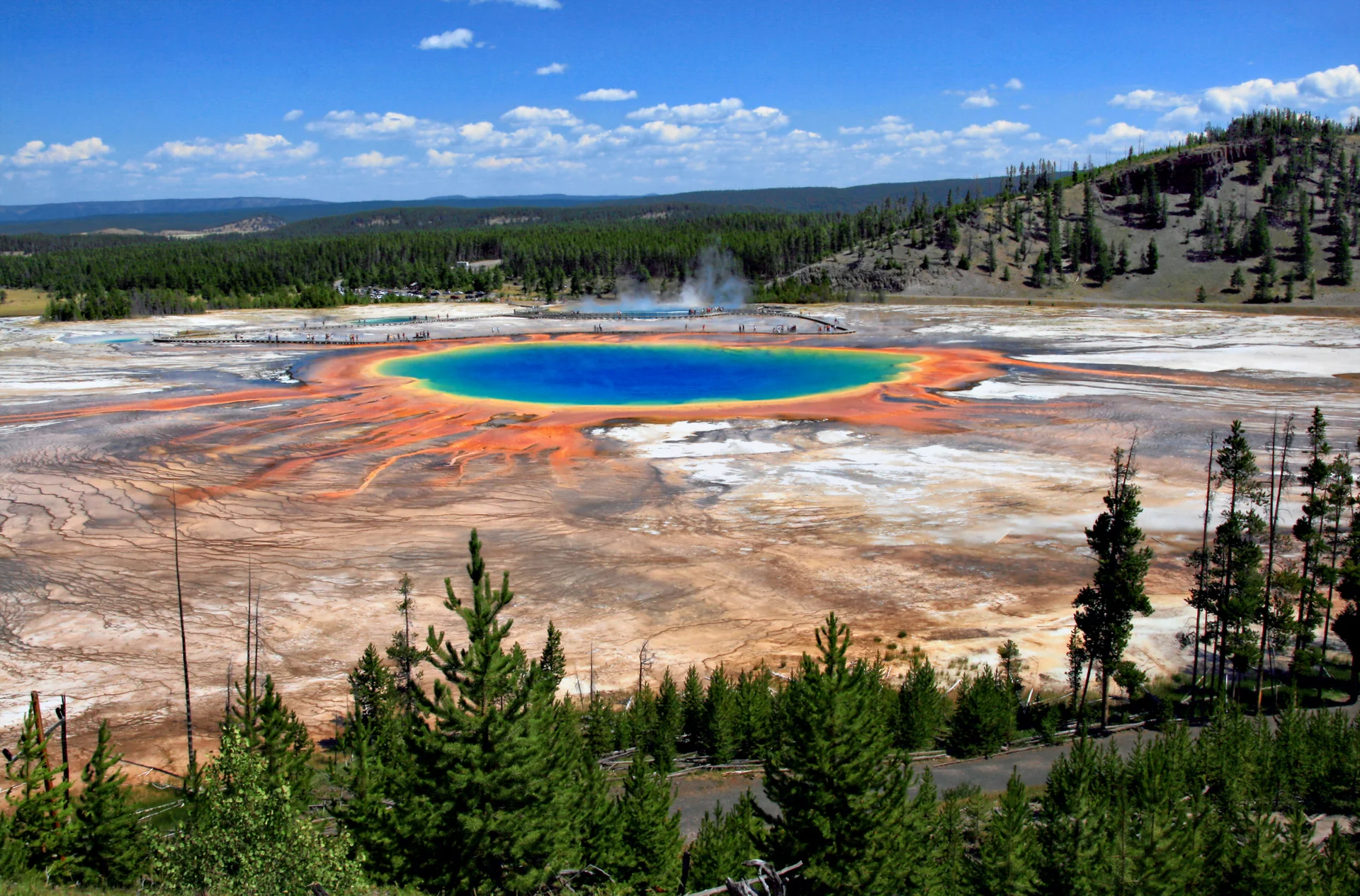
Yellowstone Geothermal Geysers and America's First National Park
Supervolcano Wilderness & Wildlife Sanctuary in the Rockies
About This Site
Yellowstone National Park represents humanity's pioneering commitment to nature preservation, established in 1872 as the world's first national park to protect extraordinary natural wonders for future generations. This vast wilderness showcases the world's greatest concentration of geothermal features, with over 10,000 hot springs, mudpots, fumaroles, and more than 500 active geysers including the iconic Old Faithful. As a UNESCO Natural Heritage Site, Yellowstone supports North America's largest wildlife populations including grizzly bears, wolves, bison, and elk whilst sitting atop one of the planet's most powerful supervolcanoes. This remarkable combination makes it an essential destination for understanding Earth's geological forces and biodiversity conservation.
Why It Matters
Yellowstone demonstrates outstanding universal value through exceptional geological processes and superlative natural phenomena. It contains the world's greatest concentration of geothermal features whilst providing essential habitat for threatened species including bison, wolves, and grizzly bears. The ecosystem preserves complete predator-prey relationships, representing a globally significant wilderness conservation model.
Natural Wonders of America's First National Park
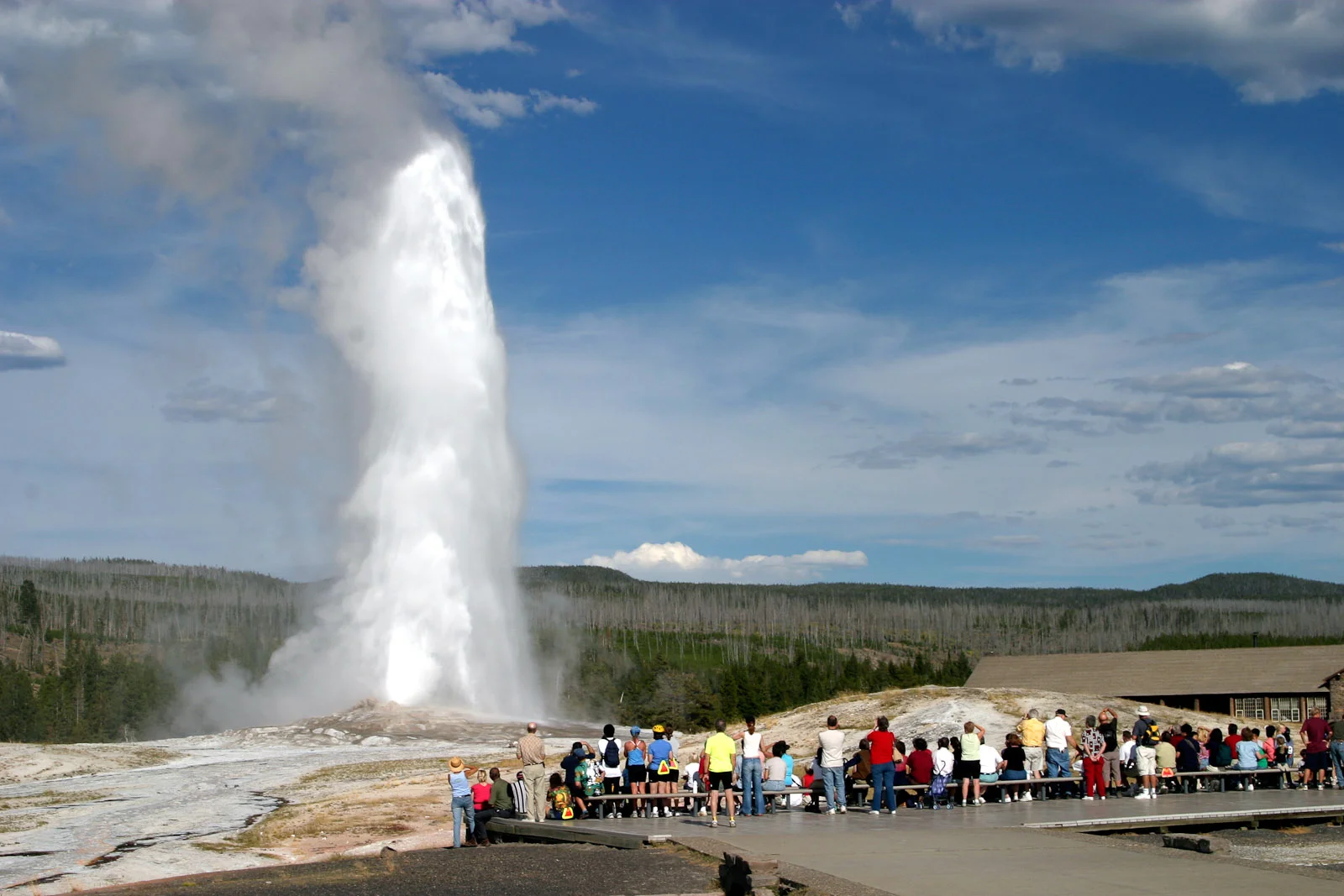
Old Faithful & Upper Geyser Basin
Experience the world's most famous geyser erupting with remarkable predictability every 90 minutes, shooting thousands of litres of boiling water up to 56 metres into the air. Old Faithful anchors the Upper Geyser Basin, which contains the highest concentration of geysers on Earth with over 150 active geysers within just 2.5 square kilometres. Walk the extensive boardwalk system to witness diverse geothermal features including Morning Glory Pool's brilliant colours, Castle Geyser's ancient sinter cone, and Grand Geyser's towering eruptions reaching 60 metres. The basin demonstrates the full spectrum of hydrothermal activity from quiet hot springs to explosive steam vents, revealing the immense volcanic forces operating beneath Yellowstone's surface through accessible and safe viewing platforms.
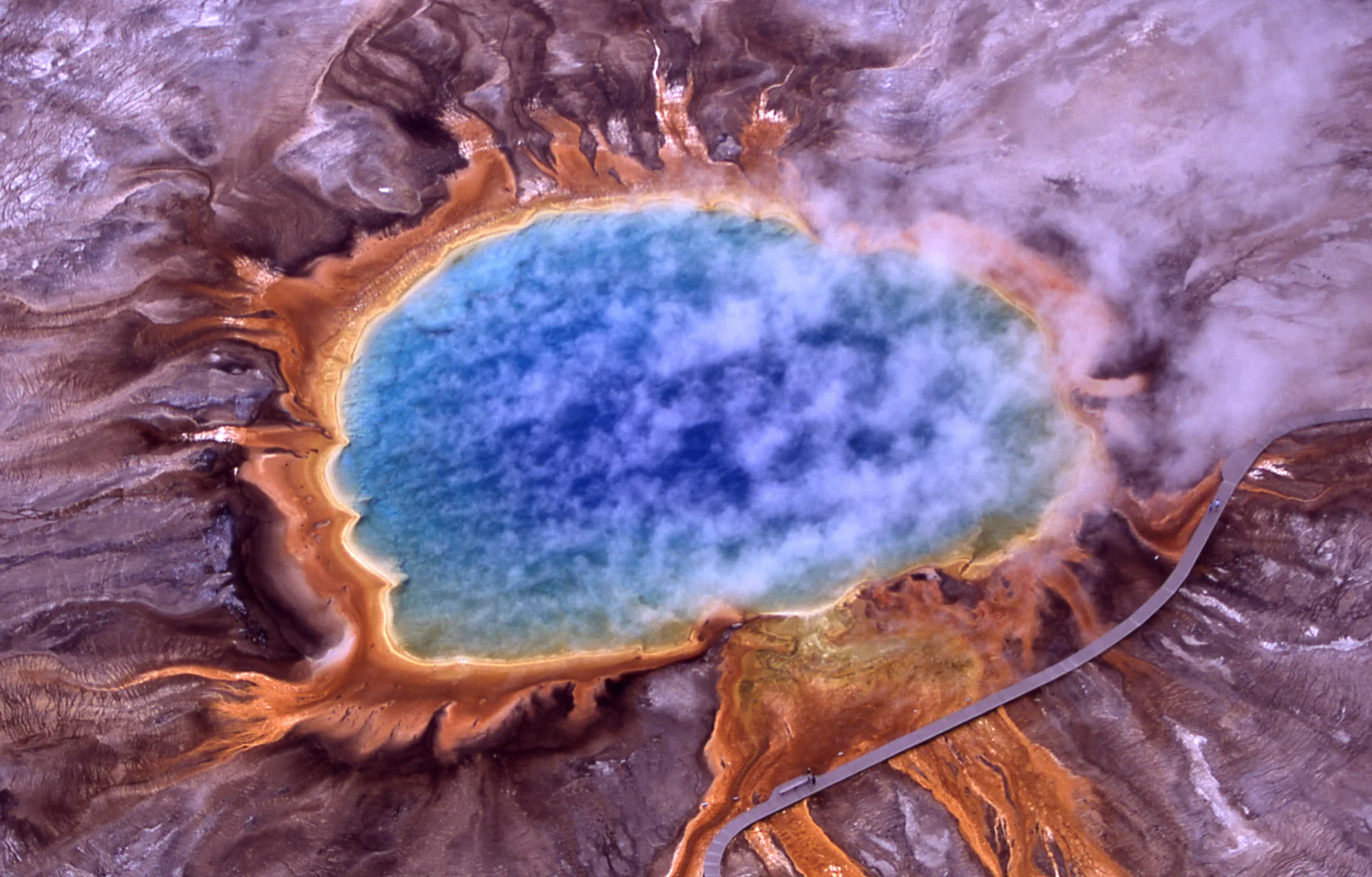
Grand Prismatic Spring & Midway Geyser Basin
Marvel at America's largest hot spring and one of Earth's most visually stunning geothermal features. The 110-metre-wide Grand Prismatic Spring displays extraordinary rainbow colours created by heat-loving bacteria forming concentric rings of orange, yellow, and green around the deep blue centre. Water temperature exceeding 70°C supports different thermophilic microorganism communities at varying distances from the scalding centre, creating nature's most spectacular demonstration of extremophile adaptation. The elevated boardwalk and overlook trail provide perspectives from ground level and above, allowing visitors to appreciate both the intimate details of bacterial mats and the grand scale of this geological masterpiece. Steam rising from the spring creates ethereal atmospheres during cooler mornings, whilst afternoon sunlight illuminates the vivid colours most intensely.
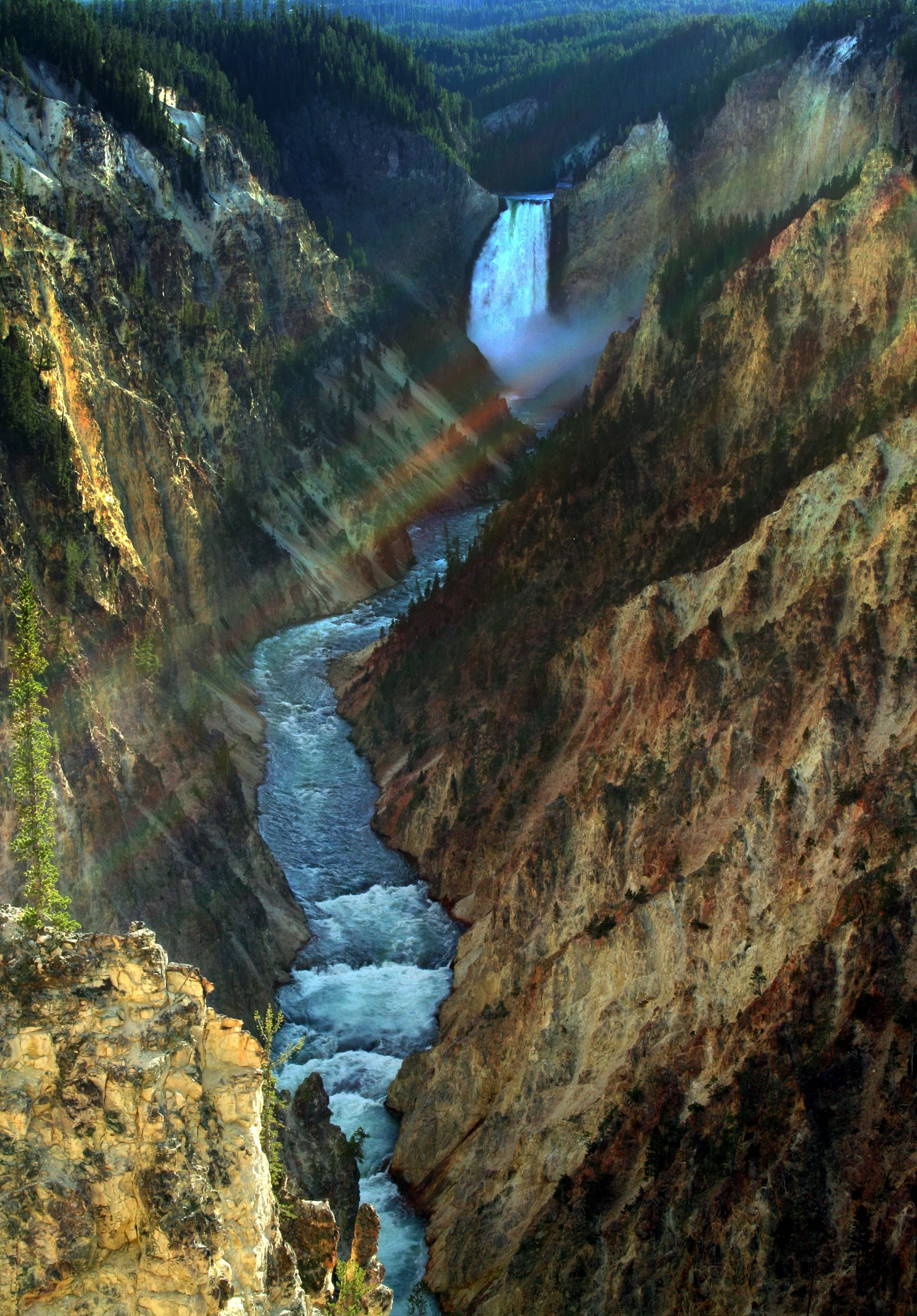
Grand Canyon of the Yellowstone
Discover one of North America's most spectacular canyons, carved by the Yellowstone River through ancient volcanic rock. The Lower Falls plunge 94 metres into a vivid canyon displaying yellow and orange hues from iron oxidation in hydrothermally altered rhyolite. Multiple viewpoints including Artist Point offer dramatic perspectives of the 32-kilometre canyon reaching 400-metre depths. Canyon walls tell geological stories through exposed lava layers and hydrothermal alterations. Hiking trails provide canyon rim and bottom-level perspectives, whilst Upper Falls offer additional spectacles. The combination of waterfalls, colourful formations, and forest-covered walls creates memorable landscapes.
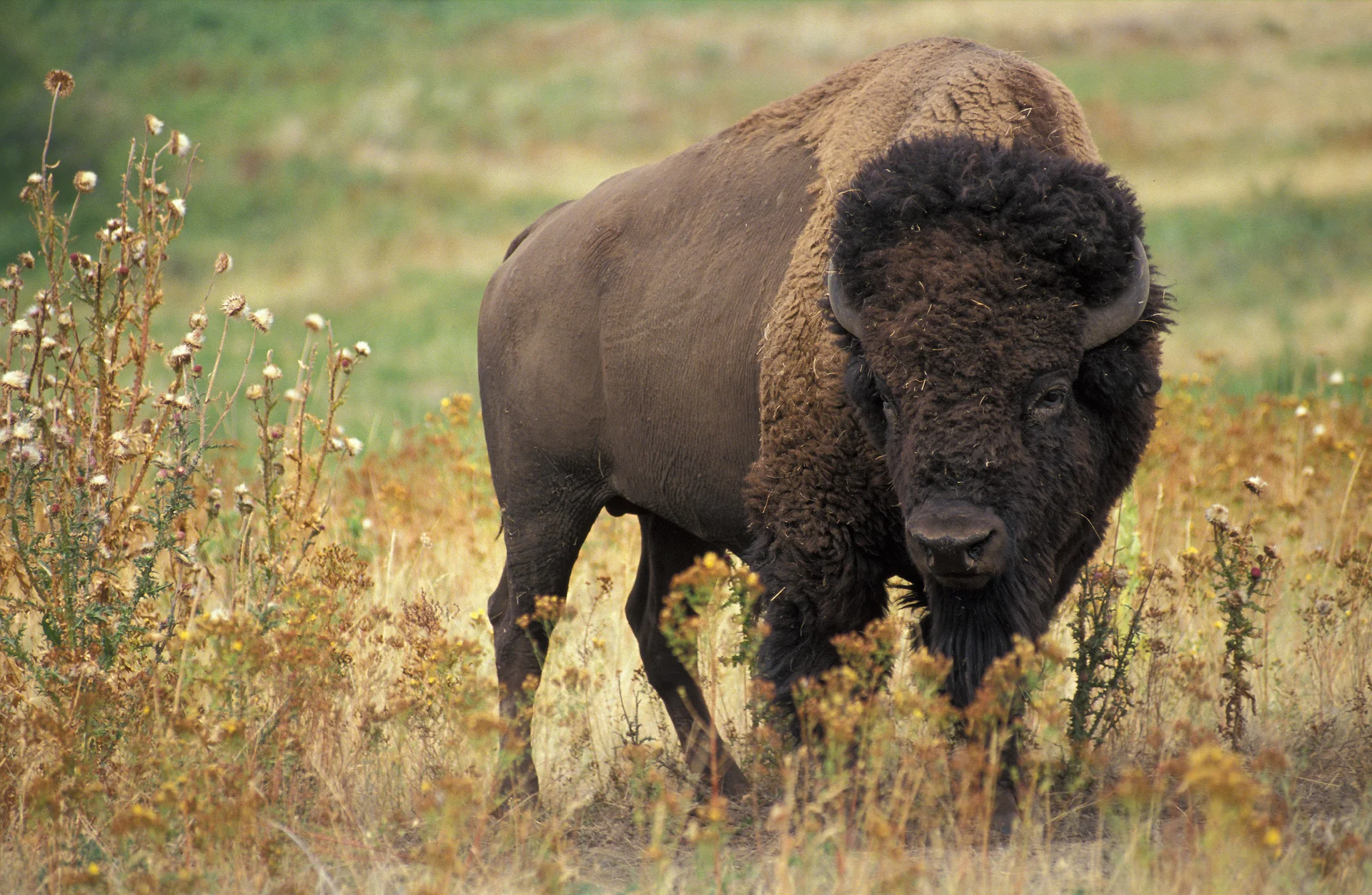
Lamar Valley Wildlife Watching
Explore America's Serengeti for exceptional wildlife viewing in the park's most expansive valley. Lamar Valley's open grasslands create ideal habitat for large mammals including bison herds numbering hundreds, elk, pronghorn, wolves, and grizzly bears. The valley's flat terrain and sparse vegetation allow unobstructed viewing across kilometres of pristine wilderness. Dawn and dusk provide optimal times when animals are active, whilst spring brings newborn calves vulnerable to predation. Grey wolf reintroduction restored predator-prey dynamics, offering rare opportunities to observe wild wolf packs hunting cooperatively. Bring quality binoculars and remain patient for unforgettable wildlife encounters in this extraordinary natural setting.
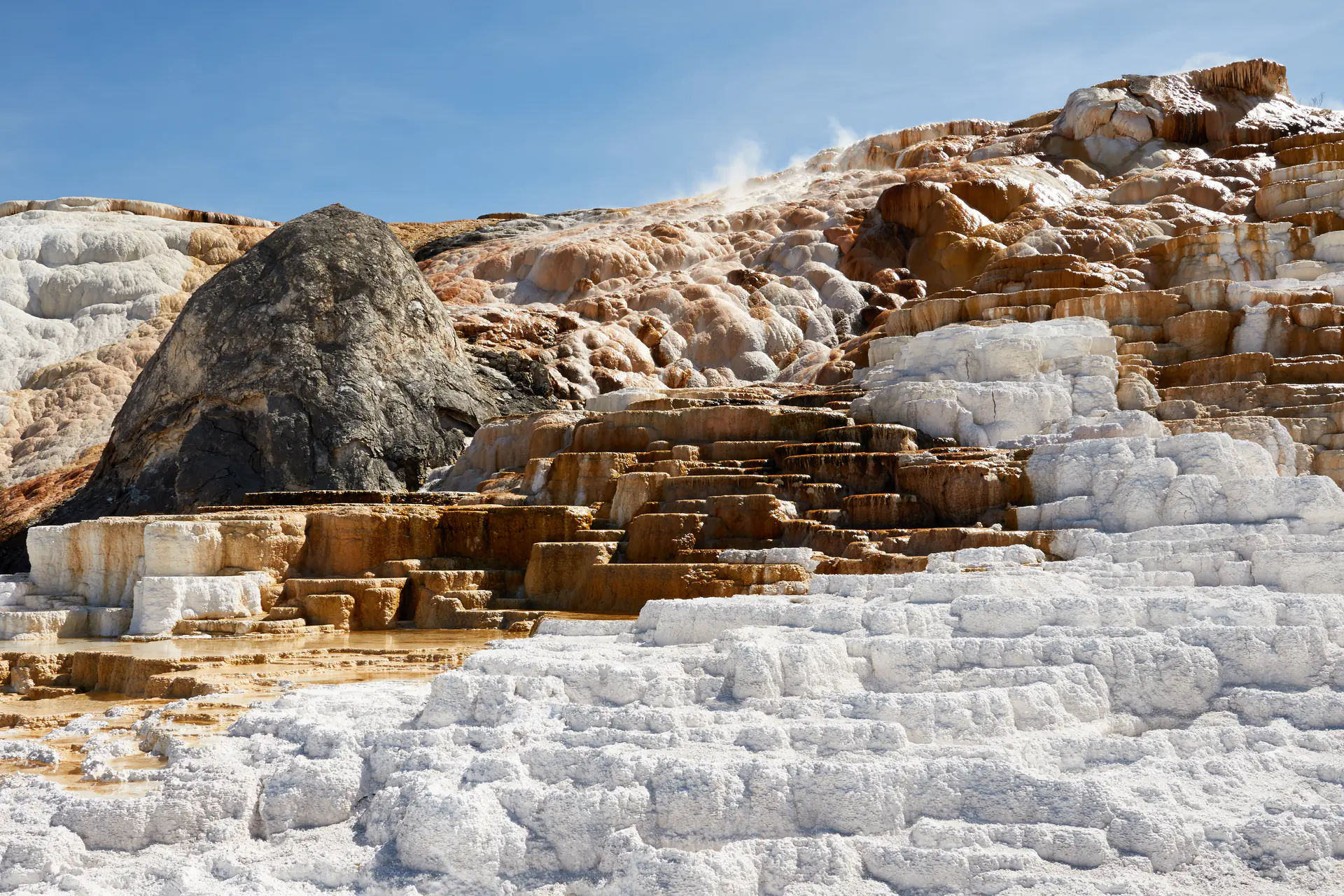
Mammoth Hot Springs Terraces
Witness distinctive geothermal features where hot water creates cascading travertine terraces unlike anywhere else in Yellowstone. Calcium carbonate terraces grow constantly as mineral-laden water flows downhill at rates up to several centimetres daily. Thermophilic bacteria add vibrant orange, brown, and green colours to white travertine, creating stunning contrasts. Upper and Lower Terrace boardwalks provide access to formations including iconic Minerva Terrace and Liberty Cap. The constantly evolving nature means each visit reveals different active areas, demonstrating geology in real-time. Dramatic contrasts between white terraces, colourful bacteria, and evergreen forest create exceptional photography opportunities.
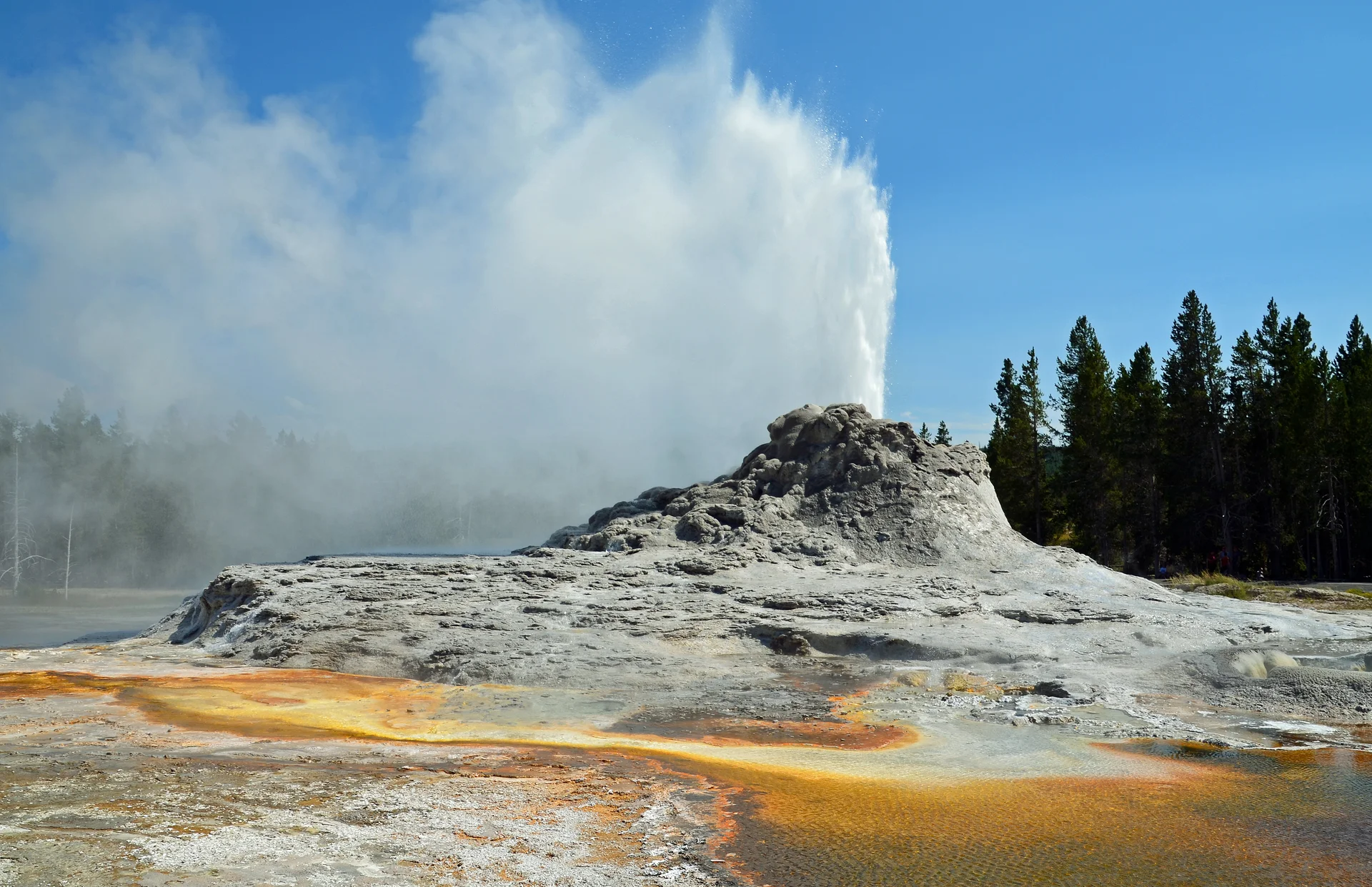
Upper Geyser Basin Thermal Features
Explore Upper Geyser Basin's extraordinary concentration of geothermal features beyond Old Faithful. Castle Geyser's massive sinter cone erupts every 14 hours with water and steam phases lasting over 30 minutes. Grand Geyser ranks as the tallest predictable geyser, reaching 60 metres during eruptions occurring roughly twice daily. Morning Glory Pool's brilliant blue contrasts with its namesake flower. Riverside Geyser erupts at an angle over Firehole River, whilst Beehive Geyser produces powerful 60-metre jets with distinctive roaring sounds. The extensive boardwalk network connects features safely whilst protecting fragile thermal areas, allowing intimate observations of Earth's internal heat.
Location & Planning
Accessible via five entrances from surrounding states (Wyoming, Montana, Idaho). Book accommodation well in advance for summer season. Free shuttle system at Old Faithful. West Yellowstone and Gardiner towns provide gateway services. Purchase park pass at entrance stations.
Loading map...
Frequently Asked Questions
Yellowstone is the world's first national park, established in 1872 to protect extraordinary geothermal features and wildlife. Famous for Old Faithful geyser, Grand Prismatic Spring, supervolcano geology, and North America's largest concentration of wild bison, grizzly bears, and wolves.
May through September offers full road access with July-August providing warmest weather but largest crowds. Late April-May features excellent wildlife viewing during calving season with newborn bison and elk, whilst September-October offers autumn colours and fewer visitors.
Yellowstone is safe when following regulations. Stay on boardwalks near thermal features where ground can collapse and water exceeds boiling point. Maintain minimum 23 metres from bison, 91 metres from bears. Carry bear spray when hiking.
Yellowstone offers exceptional wildlife viewing with bison, elk, wolves, grizzly bears, black bears, pronghorn, bighorn sheep, and eagles. Lamar Valley and Hayden Valley provide best opportunities, especially during dawn and dusk when animals are most active.
Private vehicle entry costs $35 for seven consecutive days across the park. Motorcycle entry is $30, individual entry $20. America the Beautiful annual pass ($80) provides better value if visiting multiple national parks throughout the year.
Pack layered clothing for variable mountain weather, waterproof jacket, sturdy hiking boots, sun protection, bear spray for hiking, binoculars for wildlife, plenty of water, and high-energy snacks. Download offline maps as mobile coverage is limited.
UNESCO World Heritage Criteria
Inscribed in 1978, this site meets 4 of UNESCO's 10 criteria for Outstanding Universal Value
Criterion (vii): Contains superlative natural phenomena
Yellowstone contains superlative natural phenomena through the world's greatest concentration of geothermal features including over 10,000 hot springs and more than 500 active geysers like Old Faithful, the Grand Prismatic Spring's extraordinary rainbow colours, and the Grand Canyon of the Yellowstone's dramatic 94-metre waterfalls plunging into vivid gorges.
Criterion (viii): Outstanding geological processes
The park represents an outstanding example of Earth's geological processes through the active Yellowstone supervolcano caldera measuring 72 by 45 kilometres, ongoing geothermal activity revealing subsurface volcanic forces, and exceptional geological features documenting volcanic, hydrothermal, and glacial processes shaping our planet over millions of years.
Criterion (ix): Outstanding ecological/biological processes
Yellowstone demonstrates outstanding ecological processes through five distinct life zones spanning from desert to boreal forest across 1,500 metres elevation, whilst wolf reintroduction restored complete predator-prey dynamics creating trophic cascades that fundamentally transformed ecosystem health, making this a global model for wilderness conservation.
Criterion (x): Contains threatened species
The park provides essential habitat for threatened species including the world's largest wild bison population approaching 5,000 individuals, recovering grizzly bear populations, grey wolves reintroduced in 1995, and endemic species like Yellowstone cutthroat trout, whilst protecting North America's most complete temperate ecosystem megafauna assemblage.
Historical Context
Indigenous Heritage (11,000+ years ago - 1872)
Native American tribes including Shoshone, Crow, and Blackfeet utilised Yellowstone seasonally for hunting, collecting obsidian for tools, and incorporating thermal features into spiritual practices for millennia before European exploration. Archaeological evidence reveals continuous human presence across thousands of years in this sacred landscape.
Exploration and Discovery (1807-1871)
Early explorers including John Colter brought tales of geysers dismissed as tall tales. The 1870 Washburn-Langford-Doane Expedition and 1871 Hayden Geological Survey with Thomas Moran paintings provided scientific documentation convincing Congress of the region's exceptional nature.
First National Park Establishment (1872)
President Grant signed legislation on 1 March 1872 establishing Yellowstone as "a public park or pleasuring-ground for the benefit and enjoyment of the people," creating the world's first national park and pioneering protected natural areas globally.
U.S. Army Management (1886-1918)
The U.S. Army administered Yellowstone for 32 years, establishing infrastructure, protecting wildlife from poaching, and ending thermal feature vandalism. Fort Yellowstone at Mammoth served as headquarters whilst cavalry patrols enforced early conservation regulations throughout the park boundaries, laying foundations for professional protected area management.
National Park Service Era (1916-present)
The National Park Service assumed management in 1918, developing visitor facilities, roads, and interpretation programmes whilst implementing modern wildlife management approaches. The 1988 fires, initially controversial, demonstrated natural fire cycles' ecological importance for forest regeneration and ecosystem health across the Greater Yellowstone Ecosystem.
UNESCO World Heritage Designation (1978)
Yellowstone became one of the first UNESCO World Heritage Sites in 1978, recognised for exceptional natural phenomena including the world's greatest geothermal feature concentration and outstanding ecosystems supporting megafauna populations. This international recognition highlighted the park's global significance for nature conservation.
Wolf Reintroduction and Ecosystem Restoration (1995-present)
Grey wolves returned after 70-year absence, restoring predator dynamics and triggering trophic cascades improving riparian habitat, stream ecology, and ecosystem health. This landmark conservation programme demonstrated apex predators' importance in wilderness conservation and became a model for ecosystem restoration efforts worldwide.
Conservation & Protection
Current Conservation Status
Comprehensive management programmes protect Yellowstone's geothermal wonders and wildlife ecosystems through scientific research, ecosystem-based management, international cooperation, and balancing preservation with sustainable public access to this natural heritage.
Conservation Challenges
- Climate change affecting snowpack, wildfire patterns, and temperature-sensitive species including cutthroat trout and whitebark pine ecosystems
- Invasive species including lake trout in Yellowstone Lake decimating native cutthroat trout populations, with cascading effects on grizzly bears and other wildlife
- Balancing visitation exceeding 4 million annual visitors with ecosystem protection, requiring infrastructure improvements and visitor management strategies
- Chronic wasting disease threatening elk and deer populations across the Greater Yellowstone Ecosystem, with potential impacts on predator-prey dynamics
Active Conservation Efforts
- Advanced monitoring systems tracking geothermal activity, volcanic conditions, and climate impacts whilst identifying vulnerable species and implementing resilience strategies for changing environmental conditions
- Intensive invasive species control including lake trout suppression in Yellowstone Lake using gill netting operations removing over 4 million invasive fish
- Ecosystem-based wildlife management maintaining natural predator-prey dynamics through wolf reintroduction and allowing natural population regulation processes
- Collaborative Greater Yellowstone Ecosystem partnerships coordinating management across 20 million acres with multiple agencies protecting migration corridors and seasonal habitats
- Sustainable tourism infrastructure improvements including boardwalk renovations, visitor centres, and transportation systems reducing environmental impacts whilst enhancing visitor experiences
Image & Content Attribution
Research & Content Sources
Photography & Visual Media
Last updated: 11 October 2025